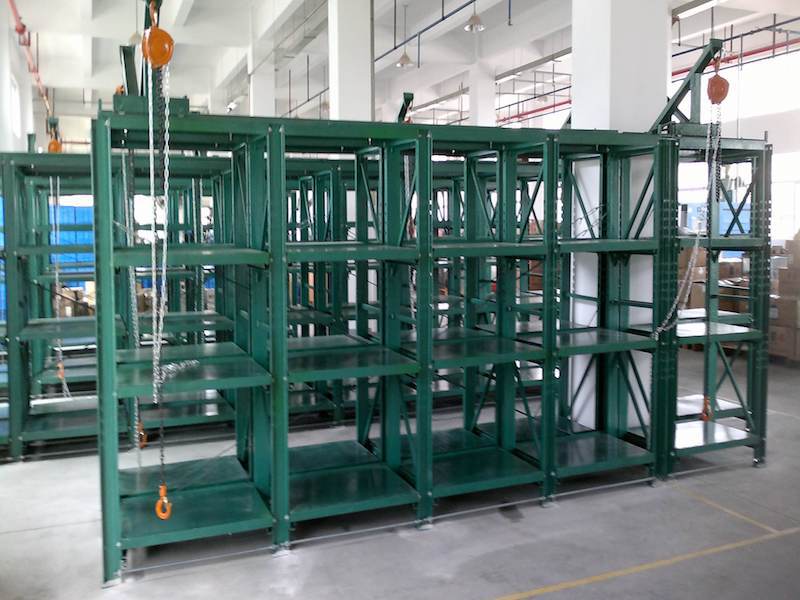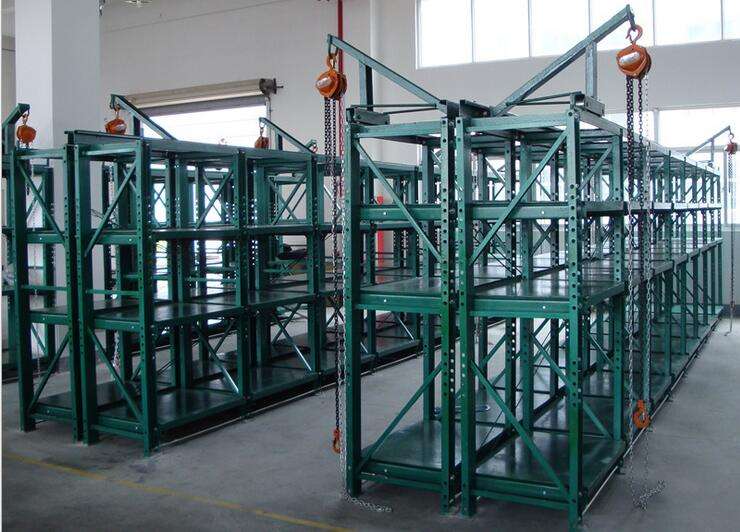Industrial racking systems are the backbone of modern warehousing and distribution, transforming vast spaces into organized, efficient storage hubs. At the heart of these systems lie industrial racking beams – the critical horizontal components that directly support the weight of palletized goods. Choosing the right racking beams is paramount for safety, efficiency, and maximizing storage density. This comprehensive guide delves into the essential aspects of industrial racking beams, providing the knowledge needed to make informed decisions.

1. Defining Industrial Racking Beams and Their Core Functions
Industrial racking beams, also referred to as pallet beams or load beams, are the horizontal structural members spanning between upright frames in pallet racking systems. They are specifically engineered to bear the weight of loaded pallets placed upon them. Their primary functions are:
Direct Load Support: They provide the essential surface upon which pallets rest, transferring the load's weight downwards through the beam connectors to the upright frames and ultimately to the floor.
Creating Storage Levels: By connecting uprights at various heights, racking beams define the individual storage levels within a bay, enabling vertical space utilization.
Ensuring System Stability: Working in conjunction with uprights and often bracing or row spacers, properly installed and loaded industrial racking beams contribute significantly to the overall rigidity and stability of the rack structure, preventing sway and potential collapse.
Facilitating Accessibility: The design and spacing of racking beams directly impact how easily forklifts or other material handling equipment can place and retrieve pallets.
In essence, without robust and correctly specified industrial racking beams, the entire pallet racking system would be incapable of safely and efficiently storing goods.
2. Materials and Manufacturing: The Science Behind Strength
The exceptional strength and durability required of industrial racking beams are achieved through precise material selection and manufacturing processes:
High-Strength Steel: Virtually all modern racking beams are fabricated from high-tensile strength steel. Common grades include ASTM A36, A529, and increasingly, higher-strength low-alloy (HSLA) steels like ASTM A572 Grade 50. These steels offer an optimal balance of strength, ductility, and weldability.
Roll Forming: The manufacturing process typically involves roll-forming. Coils of steel are fed through a series of precision rollers that progressively bend the metal into the desired cross-sectional profile. This cold-forming process work-hardens the steel, enhancing its strength.
Key Profiles: The most common cross-sections are:
Box Beam (Rectangular Hollow Section - RHS): Offers excellent torsional rigidity and resistance to bending in both directions. Often used for heavier loads or longer spans.
Step Beam (C-Channel with returns): Features a distinctive "step" or lip at the top and bottom edges. This design increases the beam's moment of inertia (resistance to bending) without adding excessive weight. The steps also provide a positive location for decking. Step beams are the most prevalent type.
Structural Channel (C-Channel): Less common for primary pallet support in modern systems due to lower torsional rigidity compared to box or step beams, but sometimes used for lighter-duty applications or as support members within shelving.
Surface Treatment: To protect against corrosion in warehouse environments (which can involve moisture, cleaning chemicals, or incidental impacts), industrial racking beams are typically finished with a powder coating or occasionally hot-dip galvanizing. Powder coating provides a durable, aesthetically pleasing finish in various colors, while galvanizing offers superior long-term corrosion resistance, especially in harsher conditions.
The choice of material grade, profile, and gauge (thickness) directly determines the load capacity and longevity of the racking beams.

3. Load Capacity and Span: The Critical Calculations
Perhaps the most crucial technical aspect of industrial racking beams is their load capacity. This isn't a single number but a complex relationship governed by several factors:
Beam Profile and Gauge: As mentioned, the shape (box, step, channel) and the thickness of the steel used significantly influence inherent strength. Thicker gauges and profiles with higher moments of inertia can support more weight.
Steel Grade: Higher tensile strength steel (e.g., Grade 50 vs. Grade 36) allows the same profile to carry more load or the same load over a longer span.
Beam Length (Span): This is paramount. Industrial racking beams act like bridges between uprights. The longer the unsupported span between connectors, the greater the bending moment experienced by the beam under load. Load capacity decreases dramatically as span increases. A beam rated for 5,000 lbs at a 6-foot span might only be rated for 2,500 lbs at a 10-foot span.
Load Type: Capacity ratings are typically given for uniformly distributed loads (UDL), meaning the weight is spread evenly across the entire beam length. Point loads (concentrated weight in one spot) or unevenly distributed loads can significantly reduce the effective capacity and potentially cause localized failure or excessive deflection.
Deflection Limits: Beyond just not breaking, racking beams must not sag excessively under load. Excessive deflection can cause pallets to become unstable, make forklift operation difficult, and potentially lead to load shifting or collapse. Industry standards (like ANSI MH16.1 in North America or EN 15635 in Europe) specify maximum allowable deflection limits, usually expressed as a fraction of the span (e.g., L/180 or L/200). This deflection constraint often governs the capacity rating more than the ultimate strength of the steel.
Safety Factor: Engineering design incorporates safety factors. A beam might theoretically hold 10,000 lbs before failing, but its rated capacity will be significantly lower (e.g., 5,000 lbs) to account for potential overloads, material inconsistencies, installation variations, and long-term wear.
Understanding the manufacturer's load tables is non-negotiable. These tables, developed through rigorous engineering calculations and testing, provide the safe working load limits (SWL) for specific industrial racking beam models at defined spans and under UDL conditions. Never exceed these ratings.
4. Beam Connectors: The Vital Link to Uprights
Industrial racking beams do not function in isolation; they transmit loads to the upright frames via specialized connectors. The design and integrity of this connection are critical for overall system safety:
Teardrop Connectors: The most common system globally. Holes shaped like teardrops are punched into the upright frames at regular intervals. Racking beams have hooks at each end that slot into these teardrops. The shape allows the hook to lock securely into the wider part of the teardrop when the beam is loaded, preventing accidental disengagement. Installation is relatively quick.
Bolt-Together Systems: In these systems, racking beams are physically bolted to tabs or plates welded onto the upright frames. This provides a very rigid connection, often used in seismic zones, for very high loads, or in drive-in/drive-through racks where lateral forces are significant. Installation is more time-consuming than teardrop systems.
Clip-In Systems: Similar in principle to teardrops but often using proprietary spring-loaded clips or pins that engage with slots in the upright. Designed for rapid assembly and disassembly.
Welded Connections: Primarily used in structural pallet racking (built-up racks) where beams are welded directly to the upright frames on-site, creating an extremely rigid structure. Less flexible for reconfiguration.
The connector type must be compatible with the upright frame profile and hole pattern. The connection's strength must also be rated for the loads imposed by the industrial racking beams. Damaged connectors (bent hooks, worn teardrops, loose bolts) are a major safety hazard and must be replaced immediately.
5. Selecting the Right Industrial Racking Beams: Key Considerations
Choosing the appropriate industrial racking beams involves a careful analysis of your specific operational needs and constraints:
Pallet Size and Weight: This is the starting point. Determine the maximum pallet dimensions (length, width, overhang) and the heaviest pallet weight (including the pallet itself). The racking beams must be long enough to adequately support the pallet (typically requiring 3-5 inches of support on each end) and have a load capacity exceeding the pallet weight at the required span. Always consider potential future increases in load weight.
Required Span: Measure the clear distance between the inside faces of the upright frames where the beams will connect. This determines the span used to look up capacity in the manufacturer's tables. Larger spans necessitate heavier-duty (and often more expensive) industrial racking beams.
Storage Height and Levels: The number of beam levels and the height of each level impact the total storage capacity and accessibility. Ensure the beam depth and connector system allow for the desired vertical spacing. Consider forklift mast heights and clearance requirements.
Racking System Type: Different rack configurations place different demands on beams:
Selective Pallet Rack: Most common; beams directly support pallets on each level. Standard step or box beams are typical.
Drive-In/Drive-Through Rack: Beams are mounted at an angle and must withstand significant lateral forces from forklifts. Heavy-duty beams with robust bolt-together connections are essential.
Push-Back Rack: Beams support nested carts. Load capacities are usually lower than selective rack, but beam specifications depend on the cart design.
Pallet Flow Rack: Beams support the flow rails or wheels. Capacity requirements are usually defined by the flow system manufacturer.
Decking Requirements: If using pallet supports, wire mesh decking, or particle board decking, ensure the industrial racking beams have a compatible profile (e.g., steps for decking to sit on) and that the combined weight of the decking and the load is within the beam's capacity.
Forklift Operation: Consider the beam depth and the presence of any decking or safety features. Deep beams or certain decking types can reduce vertical clearance, potentially hindering pallet placement/retrieval for some forklifts.
Safety Standards and Compliance: Ensure all industrial racking beams and the overall system comply with relevant local and national safety standards (e.g., ANSI MH16.1, OSHA regulations in the US, EN standards in Europe, AS 4084 in Australia). Use only beams provided or approved by the rack manufacturer for your specific upright frames.
Supplier Reputation and Support: Source industrial racking beams from reputable manufacturers or suppliers who provide certified load tables, clear installation instructions, and accessible technical support. Beware of uncertified or mismatched components.
Beyond the Basics: Additional Considerations
Beam Deflectors: Plastic or metal guards attached to the face of the beam to protect them from direct forklift impact, reducing damage and maintenance costs.
Safety Pins/Clips: Secondary locking devices used in teardrop systems as an extra precaution against accidental beam dislodgement, especially in seismic zones or high-traffic areas.
End Caps: Plastic caps fitted to the open ends of box beams, primarily for safety (covering sharp edges) and aesthetics.
Compatibility with Automation: As warehouses automate (using AS/RS, shuttle systems), industrial racking beams must meet precise tolerances for flatness, straightness, and connector placement to ensure smooth operation of automated equipment. Specific profiles designed for minimal deflection under dynamic loads may be required.
Industrial racking beams are far more than simple metal bars; they are precision-engineered components fundamental to the safety, capacity, and efficiency of any pallet racking system. Understanding their functions, the critical interplay between material, profile, span, and load capacity, the importance of robust connectors, and the factors guiding proper selection is essential for warehouse managers, safety professionals, and anyone involved in storage system design or operation.
Investing time in selecting the correct industrial racking beams, adhering strictly to certified load capacities, ensuring professional installation, and implementing regular inspections and maintenance protocols are not just operational choices – they are critical investments in workplace safety and the long-term productivity of your warehouse. Never compromise on the integrity of these vital structural elements. By prioritizing the correct specification and care of your racking beams, you build a solid foundation for a safe, organized, and high-performing storage operation.







